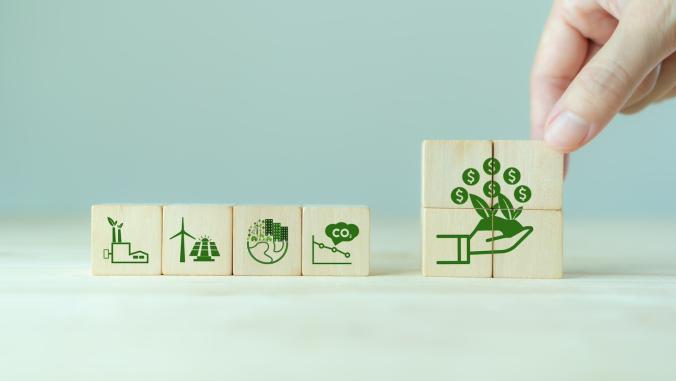3 takeaways from Google's search for 'carbon-free' energy
There's incidentally some irony in corporate renewable energy procurement.

The "Googleplex," or the company Google's headquarters, in Mountain View, California.
This article is drawn from the Energy Weekly newsletter from GreenBiz, running Thursdays.
Keeping up with the various phrases used by companies to describe clean power commitments takes some serious energy. But here's one descriptor that more corporate sustainability professionals should have on their radar when it comes to future renewables strategy: "carbon free."
The concept is explored at depth in a "discussion paper" (PDF) published earlier this month by tech giant Google. In an accompanying blog post, Michael Terrell, Google's head of energy market development, described the dilemma that every company that is procuring renewable electricity to address the carbon emissions related to its power consumption currently faces.
It's this: Right now, companies are becoming "100 percent renewable" by matching their actual electricity consumption — most of which is actually from carbon-based sources such as coal, natural gas or oil — with renewably generated, carbon-free sources such as solar or wind (or, to be practical, other resources such as geothermal, hydro, nuclear and biomass).
Even though Google has acquired more renewable electricity than any other company — 7 billion kilowatt-hours in 2017 alone, enough to power the entire state of Rhode Island — there are times when certain operations must rely more heavily on fossil fuels. As you might expect, that's often in the middle of the night or when the wind isn't blowing or the sun isn't shining or there's some other weather glitch.
In certain regions, particularly in Asia, Google's operations are more heavily reliant on carbon-based resources because of the grid mix. In Finland, the company faces a different sort: Because the local grid there already uses such a high percentage of electricity generated by renewable sources, Google's own resources actually could be displacing a "fellow carbon-free resource."Even though Google has acquired more renewable electricity than any other company, there are times when certain operations must rely more heavily on fossil fuels.
To get a better handle on how well the company's data centers actually match the renewables available on a specific grid, the company has created what it calls "carbon heat maps" to visualize that impact. Those graphics show that despite Google's impressive feat of matching all its electricity consumption with renewables, it has a long way to go before it can describe its operations as carbon-free on a 24x7 basis. (By the way, the limitations of this newsletter won't allow me to embed one of the charts here, which is another reason you need to check out Google's brief.)
One of the most interesting statements in Terrell's blog is this: "We plan to tackle this issue in the coming years by procuring additional types of carbon-free energy."
After I poked into the discussion paper, I came away with these three vivid impressions (call them hunches if you will) about Google's evolving energy strategy:
- The future is likely to include investments in carbon capture and energy storage technologies.
- More of the company's attention will be focused on influencing the transition outside the United States, in places such as Taiwan, as well as in U.S. regions where the barriers to additional renewables have been related more to market structure and policy than technology or price.
- Don't be surprised if you hear Google talk more about "firm" carbon-free options such as nuclear or hydropower that receive less attention than "variable" sources such as solar and wind. As the paper notes: "It's important for governments, utilities and other energy market players to carefully consider the retirement of existing firm carbon-free generation."
As the chief energy strategist with another tech giant, Microsoft's Brian Janous, observed to me last week, the state of being 100 percent renewable is as variable as the traditional generating sources used to make those claims, solar and wind. It's what prompted his teams to come up with a new sort of contract structure, a "volume firming agreement," to help diffuse the operational risks that companies might face when they sign traditional power purchase agreements. (You can read about this new model in this story.)
As the industry flirts with another record in corporate procurement contracts for renewable electricity, an anticipated 5 gigawatts this year based on the latest projections this week by the Rocky Mountain Institute Business Renewables Center, get ready for a new vocabulary — and the innovations given life by that new language.





